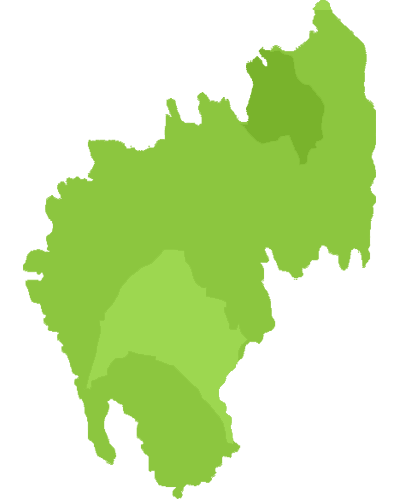
The origin of the name of Tripura is still a matter of controversy among historians and researchers. According to the 'Rajmala', Tripura's celebrated court chronicle, an ancient king named 'Tripur' ruled over the territorial domain known as 'Tripura' and the name of the kingdom was derived from his name. A school of historians, however, challenge this story and identify 'Tripur' as an imaginary and a historical character.
Down the annals of history Tripura has been known to be an exotic geographical entity silhouetted by lush green hills and dotted with fertile valleys crisscrossed by flowing rivers—home to benign tribals co-existing with their Bengali neighbours.
The present state of Tripura, bordered on three sides by Bangladesh and on two sides by neighbouring states of Assam and Mizoram, is only a fragment of its earlier glorious self exercising sovereign control over the whole of present Comilla district and parts of Noakhali, Sylhet and Chittagong districts of Bangladesh
Prior to its merger with the Indian Union, the state of Tripura was a princely state. It claims to the most ancient of all the former princely states in India. Scholars are of opinion that the state has been ruled by the Maharajas for an unbroken period of thirteen hundred years before it acceded to the Indian Union on October 15, 1949.
The people of Tripura are mostly tribal. The tribes of Tripura are of Tibeto-Burmese origin.The Tripuris, the largest tribe live in the west while sizeable numbers of Reangs and Jamatias live in the north and south respectively. The Tripuris live in elevated houses made of bamboo called 'Tong’ to keep away wild animals. The population is largely Bengali in spite of 19 Scheduled Tribes. The other tribes are Chakma, Halam and Usai. Some of the tribes still cling on to quaint customs like floating colourful parasols in ponds to honour the dead!







